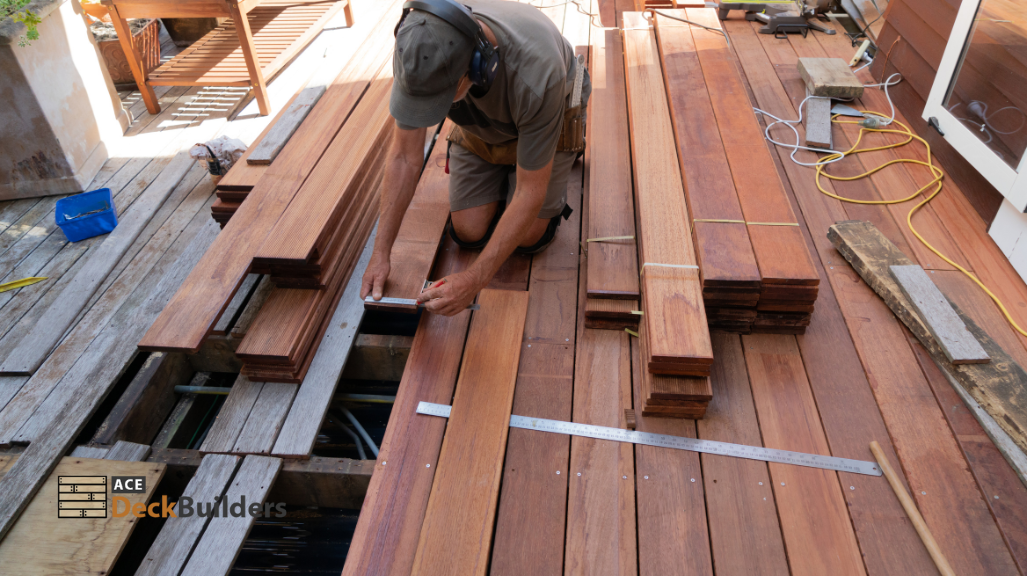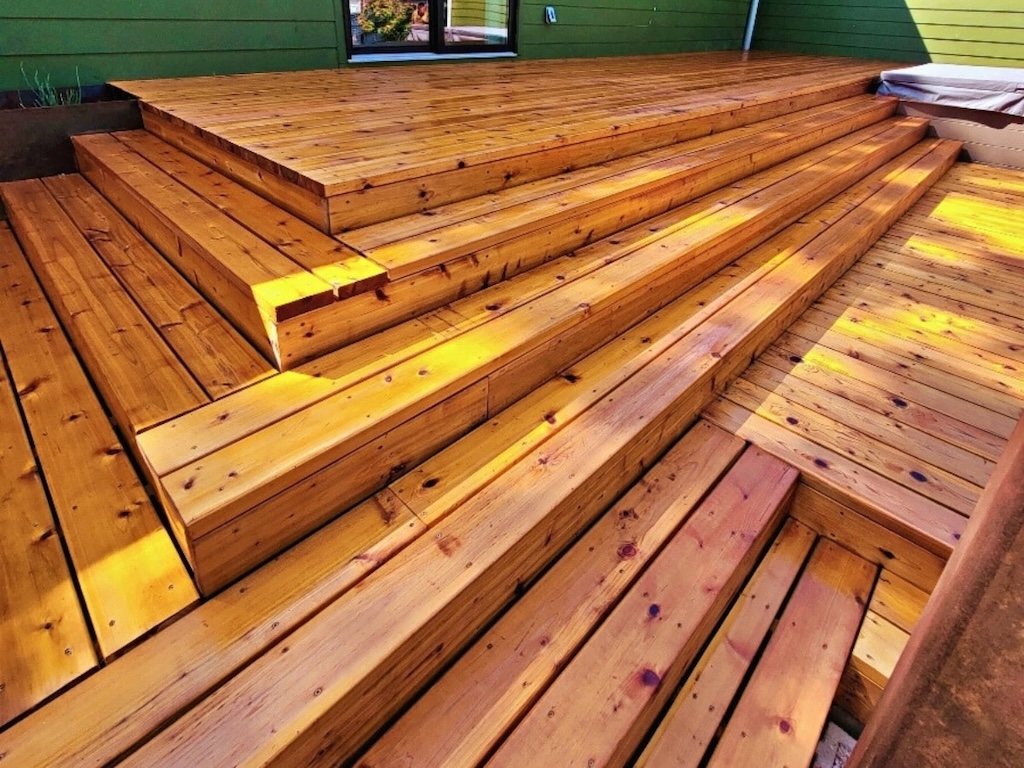TL;DR
A proper deck estimate visit in Austin isn’t just a quick “walk-and-talk.” A good pro will (1) clarify goals and budget, (2) measure and map your site, (3) test structural assumptions, (4) review materials for Texas heat/UV, (5) flag permit/HOA needs, and (6) define a scope with line items, allowances, and an inspection-ready schedule. Expect photos, notes, and a follow-up proposal with options. If you want a benchmark for a clean, well-run process and portfolio in the Austin area, start with Ace Deck Builders or another reputable contractor.
Table of Contents
ToggleWhy the Estimate Visit Matters More Than the Number
The visit is where a builder turns your ideas into a buildable plan. It’s the difference between a one-line price and a decision-ready proposal that you can compare across bidders. In Austin, this matters because heat, UV, sudden storms, inspection pacing, and HOA rules create failure points for contractors providing generic quotes. A strong estimate visit reduces surprises later.
What a Pro Does Before They Arrive

A prepared estimator will usually:
- Review your notes/photos and any rough dimensions you provided.
- Pull up your lot shape, basic topography clues, and potential setback/easement hints.
- Skim HOA rules if you’ve shared them.
- Preload a checklist tailored to your home’s orientation (e.g., west-facing = heat plan).
This pre-work means the on-site time focuses on verification and the right tools for options, not guesswork.
The On-Site Flow: Minute-by-Minute
Every company has its cadence, but a high-quality visit often looks like this:
- Kickoff (5–10 minutes):
- Quick interview about how you’ll use the space (dining, lounging, spa, grill).
- Confirm any constraints (pets, irrigation, HOA timeline, event deadlines).
- Align on budget and priorities (comfort, low maintenance, aesthetics, resale).
- Site Walk (10–20 minutes):
- Trace access routes (staging, demo haul-off).
- Note slopes, drainage, tree roots, and neighboring sightlines/privacy.
- Identify utilities and hazards (gas/electric/irrigation).
- Measurements (10–25 minutes):
- Document current or proposed length × width, finished height, stair runs, and rail linear feet.
- Measure door thresholds, grade changes, and landing areas.
- Structure Triage (10–20 minutes, if replacing/expanding):
- Visual check of ledger area, flashing, and any signs of water intrusion.
- Probe footings/post bases if accessible; spot undersized spans or missing blocking.
- Materials & Finish Options (10–20 minutes):
- Discuss heat/UV realities, barefoot comfort, and color stability.
- Evaluate sample boards and fastener systems (hidden vs. plugs).
- Align on rails (picket, cable, or glass) and stair details.
- Permit/HOA Path (5–10 minutes):
- Clarify who submits the drawings, how many inspections are required, and the typical timing for each inspection.
- Confirm whether any trades (electrical/gas) require licensed subs.
- Wrap-up (5–10 minutes):
- Recap scope, confirm any unknowns that need allowances, and align on proposal timing.
- Set expectations for options (e.g., cedar vs. composite vs. PVC) and schedule “hold points.”
Measuring Right: Dimensions, Heights, and Rail Lengths
Your final price will track two things more than anything else: area and rails/stairs.
- Deck area (sq. ft.) drives framing, decking, and labor.
- Rails (linear feet) often rival decking costs on complex layouts. Stair rails cost more than level runs.
- Heights determine stair counts and landings, as well as code details (guard height, graspable handrails).
- Door thresholds affect step-downs and weatherproof transitions.
Pros use laser measures and photo mapping to capture these precisely, so your bid reflects reality—not a rounded guess.
Structure Triage: Ledger, Footings, Joists, Rails
If you’re replacing or enlarging a deck, expect a quick but meaningful inspection:
- Ledger & flashing: The house connection must be sound and properly flashed. Corrosion, pulled fasteners, or rot are deal-breakers for “board-swap only” plans.
- Footings & posts: Posts should be on proper bases, not buried. Inspectors want to see footing depth/diameter before concrete—your estimate should assume a realistic count.
- Joists & beams: Span tables change with material. Composite/PVC often needs tighter spacing than wood; undersized or tired framing isn’t worth preserving.
- Rails & stairs: Wobbly posts, racking rails, or unsafe rise/run push the scope toward rebuild or serious reinforcement.
You’ll hear clear language like “repairable,” “replace,” or “engineer recommended” with photos to match.
Material Guidance for Austin Heat & UV

Materials aren’t just a style choice in Central Texas—they’re a comfort and maintenance choice.
- Cedar & softwoods: Cooler underfoot; lower upfront; need stain/seal cycles ~12–24 months.
- Composite: Lower routine maintenance; stable color; darker tones can feel hot—lighter shades help.
- PVC: Top moisture resistance and color stability; higher upfront; installation details matter.
Your estimator should leave sample boards to heat-test at noon rather than in the evening and explain a 10-year total cost comparison—including maintenance cycles and likely stain schedules for wood.
Want to preview the complete step-by-step build sequence so the estimate makes sense in context? Skim the process overview for deck installation in Austin to see drawings, inspection “hold points,” and punch-list flow in plain English.
Permit, HOA & Inspection Planning
In Austin, most substantive decks will involve permits, several factors, and three inspection gates:
- Footings—verify depth/diameter and soil before concrete.
- Framing—ledger flashing, fastener patterns, joist spans, and rail post connections are checked before decking hides anything.
- Final—guard height, stair geometry, electrical trim (if any), overall safety.
If you have an HOA, the estimator may suggest a submission packet with series names, color chips, plan/elevation views, and rail details to avoid re-submittals.
If you’re unsure whether your existing structure is safe, it may be worth a focused assessment before committing to an enormous scope. See how a pro evaluates safety and code during a plain-English deck inspection in Austin.
Photos, Notes & How Pros Build Your Proposal
A credible estimate visit ends with evidence: photos, dimensioned sketches, and a list of assumptions. Back at the desk, the estimator:
- Maps footings, spans/spacing for your chosen board, and blocking for rails/stairs.
- Builds line items: framing, decking series/color, rails (level & stair LF), stairs, skirting/fascia, lighting.
- Adds allowances (rock excavation, hidden rot, extra piers) to manage unknowns without padding.
- Write exclusions (irrigation repair, landscaping fix, furniture/grills) so the scope is honest.
- Draft a Gantt with inspection hold points and weather buffers.
- Provides options pricing (e.g., cedar vs. composite vs. PVC), not just a single number.
If you’re still shortlisting firms and want question prompts for your following conversation, this quick primer—questions to ask before hiring a deck contractor—keeps interviews focused on structure, permits, and schedule integrity.
Your Role as the Homeowner (How to Speed This Up)
You can cut days from the estimating cycle by prepping:
- Photos & rough dimensions of the current space and desired footprint.
- Lot survey (if handy) and any HOA rules you’ve received.
- A clear material lane (e.g., “light-tone composite or PVC”) plus a backup choice.
- A list of must-haves (privacy, shade zone, lighting, kitchen) and nice-to-haves you can phase later.
- Realistic budget and timeframe (events, travel, or HOA deadlines).
And on visit day: unlock gates, corral pets, clear walk paths, and have a hose or outlet available if needed for tests.
What a Good Proposal Looks Like (And How to Read It)

Look for these sections:
- Plan view with key dimensions and elevations
- Line items for framing, decking, rails (LF), stairs, skirting/fascia, lighting
- Hardware details (ledger fasteners/flashing, post bases, hangers, corrosion class)
- Allowances & exclusions spelled out with unit pricing where relevant
- Permit & inspection plan—who submits and who meets inspectors
- Schedule with inspection hold points and weather buffers
- Warranty—workmanship in writing (and who helps with manufacturer claims)
- Change-order rules—written, priced, and approved before work proceeds
- Payment schedule—milestones (permit approval, material delivery, framing inspection pass, substantial completion)
If something is missing, ask for it. You’re not being picky; you’re protecting your schedule and budget.
Thinking you may be replacing rather than repairing? It helps to preview the scope and lifecycle math. See the end-to-end flow in creating your dream deck in Austin so your estimate options line up with real build steps.
Red Flags During the Visit
- “No permit needed” for a deck that clearly triggers one.
- Unwillingness to discuss ledger flashing, footing sizes, joist spacing, or rail post blocking.
- One-line quotes with no plan, no line items, and no allowances.
- Immediate availability in peak season plus heavy deposits ahead of permits/materials.
- No workmanship warranty in writing, or exclusions that gut its value.
FAQs
Most take 45–90 minutes, depending on site complexity, existing structure, and how many options you want to explore.
Yes—at least one decision-maker. You’ll make faster progress when you can confirm use-cases, material lanes, and budget ranges in real time.
If your scope is simple and you’re choosing between one or two materials, a free estimate is often perfect. If you need drawings, option pricing, HOA-ready documents, or engineered touchpoints, a paid design/estimate (often credited later) saves time and change orders.
Your estimator should confirm the frame meets current span/spacing tables, has a properly flashed ledger, and passes a quick structural review. Many older frames need upgrades before new wood decking boards make sense.
A simple, single-option proposal can be delivered the next day. Multi-option or HOA-level packets take longer. Ask for a realistic timeline and an estimated project cost t the end of the visit so you can plan your decision window.
Get a Decision-Ready Estimate
Want an estimate you can act on—with line-item pricing, option sets, permit notes, and a schedule tied to inspection hold points? Start your project with a free deck estimate in Austin. We’ll map your goals, bring heat-tested samples, and deliver a plan you can trust from first sketch to final walkthrough.
